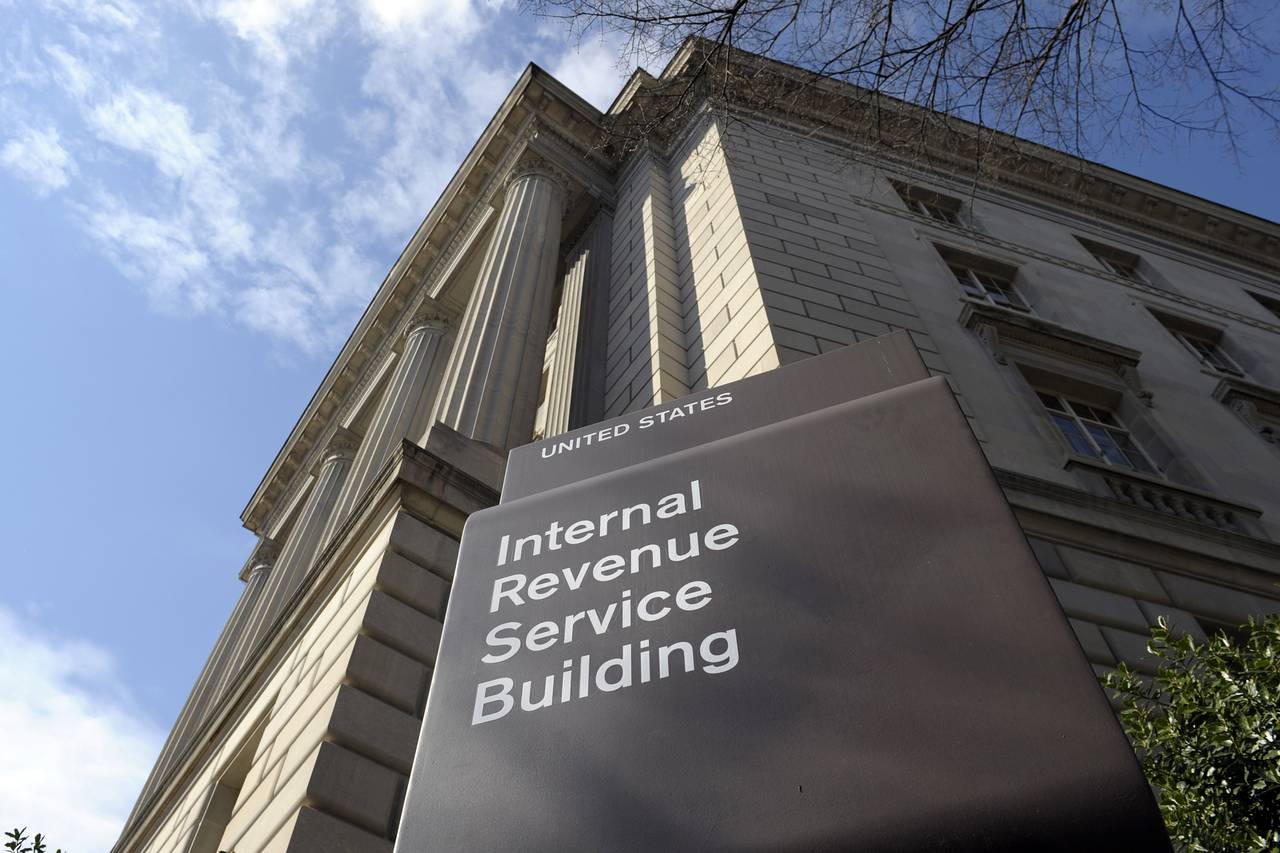

Finance
What Is A Buyers Credit At Closing
Published: January 6, 2024
Learn about buyers credit at closing and how it can help finance your home purchase. Discover the benefits and eligibility requirements.
(Many of the links in this article redirect to a specific reviewed product. Your purchase of these products through affiliate links helps to generate commission for LiveWell, at no extra cost. Learn more)
Table of Contents
Introduction
Buying a home is an exciting and significant milestone in one’s life. However, it is often accompanied by numerous financial considerations, including the costs associated with closing the deal. Closing costs typically include expenses such as attorney fees, appraisal fees, title insurance, and more. These costs can add up and become a burden for homebuyers, especially if they are already using a substantial amount of their savings for the down payment and other expenses.
Fortunately, there are options available to help alleviate the financial strain of closing costs. One such option is a buyer’s credit at closing, also known as a seller’s concession or seller’s credit. In simple terms, a buyer’s credit at closing is an agreement between the buyer and the seller, wherein the seller agrees to contribute a certain amount of money towards the buyer’s closing costs.
The buyer’s credit at closing can be a lifesaver for many homebuyers, as it can help reduce the initial financial burden and make homeownership more affordable. Moreover, it can provide some flexibility for buyers, allowing them to allocate their funds towards other essential expenses related to their new home.
In this article, we will explore the concept of a buyer’s credit at closing in more detail. We will discuss its definition, purpose, how it works, the benefits and potential drawbacks, factors to consider when negotiating it, and provide some examples of buyer’s credit scenarios. By understanding this financial option, homebuyers will be able to make informed decisions about their real estate transactions and potentially save money in the process.
Definition of Buyer’s Credit
A buyer’s credit at closing refers to a financial arrangement in a real estate transaction where the seller agrees to contribute a certain amount of money towards the buyer’s closing costs. These closing costs typically include expenses such as loan origination fees, appraisal fees, title insurance fees, attorney fees, and other costs associated with the transfer of ownership from the seller to the buyer.
The buyer’s credit at closing is essentially a form of financial assistance provided by the seller to the buyer, reducing the amount of money the buyer needs to bring to the closing table. This credit can be negotiated as a fixed amount or as a percentage of the home’s purchase price, depending on the terms agreed upon by both parties.
It’s important to note that the buyer’s credit at closing is different from the down payment. The down payment is the portion of the purchase price that the buyer must pay upfront and is not covered by a credit from the seller. The buyer’s credit at closing, on the other hand, helps offset the additional costs associated with the transaction beyond the down payment.
Buyer’s credit at closing is commonly used in real estate transactions where the buyer is seeking financial assistance to cover the closing costs. This option can be particularly beneficial for first-time homebuyers or those who have limited funds available for upfront expenses.
It’s worth mentioning that the availability and amount of a buyer’s credit at closing may vary depending on the negotiations between the buyer and seller. Some sellers may be more inclined to provide a credit to attract potential buyers or to expedite the sale, while others may be less willing to offer financial assistance.
Now that we have a clear understanding of what a buyer’s credit at closing is, let’s delve into the purpose it serves and the benefits it can offer to homebuyers.
Purpose of Buyer’s Credit at Closing
The primary purpose of a buyer’s credit at closing is to help alleviate the financial burden that comes with closing a real estate transaction. Buying a home involves numerous costs beyond the down payment, such as appraisal fees, attorney fees, title insurance, and more. These additional expenses can quickly add up and become a significant financial hurdle for homebuyers.
By offering a buyer’s credit at closing, the seller assists the buyer in covering a portion of these closing costs. This financial assistance can make the home purchase more attainable and less financially straining, especially for those who may have limited funds available or prefer to allocate their savings towards other expenses related to their new home.
Additionally, a buyer’s credit at closing can help bridge the gap between the purchase price of the home and the actual cash amount the buyer needs to bring to the closing table. This can be particularly advantageous for individuals who are utilizing most of their savings for the down payment and need some breathing room when it comes to the closing costs.
Another purpose of a buyer’s credit at closing is to make the property more appealing to potential buyers. In a competitive real estate market, offering a buyer’s credit can make a listing stand out and attract more interest from prospective buyers. It can give sellers a competitive edge by demonstrating their willingness to provide financial assistance and help buyers overcome the hurdle of closing costs.
Furthermore, a buyer’s credit at closing can facilitate a smoother and more efficient transaction. By reducing the financial burden on the buyer, it helps streamline the closing process. Buyers can proceed with the transaction without delay, knowing that they have some financial support to cover the additional expenses.
The purpose of a buyer’s credit at closing is ultimately to create a win-win situation for both the buyer and the seller. The buyer receives financial assistance to offset the closing costs, while the seller potentially attracts more buyers and expedites the sale of their property.
Now that we understand the purpose of a buyer’s credit at closing, let’s explore how this financial arrangement works in practice.
How Buyer’s Credit Works
A buyer’s credit at closing works by the seller agreeing to contribute a certain amount of money towards the buyer’s closing costs outlined in the purchase contract. The specific terms of the buyer’s credit, including the amount and the allocation of funds, are typically negotiated between the buyer and the seller with the assistance of their real estate agents or attorneys.
Once the purchase agreement is accepted and both parties agree to include a buyer’s credit at closing, the agreed-upon amount is documented in the contract. The buyer’s credit can be expressed as a fixed dollar amount or as a percentage of the home’s purchase price.
During the closing process, the buyer’s credit is typically applied towards the various closing costs, such as appraisal fees, attorney fees, title insurance, and other expenses specified in the contract. The credit reduces the amount of money the buyer needs to bring to the closing table, effectively lowering their out-of-pocket expenses.
It’s important to note that the structure of the buyer’s credit may also affect the terms of the mortgage loan. Some lenders place restrictions on the maximum amount of seller credits allowed, and these limitations can vary depending on the loan program and the buyer’s financial situation. Buyers should consult with their lender to ensure that the buyer’s credit aligns with any applicable loan guidelines.
Buyer’s credit at closing is typically accounted for in the settlement statement prepared by the closing agent or escrow officer. This statement outlines the details of the transaction, including the buyer’s credit, the remaining balance to be paid by the buyer, and any adjustments or prorations.
It is essential for both the buyer and the seller to carefully review the settlement statement and ensure that the buyer’s credit is accurately reflected before signing the final documents. Any discrepancies should be immediately addressed and resolved to avoid any potential complications.
Overall, a buyer’s credit at closing provides a financial benefit to the buyer by reducing the amount of money they need to bring to the closing table. It can help make the home purchase more affordable and accessible, particularly for buyers who may have limited funds for closing costs.
Next, let’s explore the benefits of a buyer’s credit at closing and consider some potential drawbacks to keep in mind during negotiations.
Benefits of Buyer’s Credit at Closing
A buyer’s credit at closing offers several benefits for homebuyers. Let’s explore some of the key advantages this arrangement provides:
1. Financial Relief: One of the most significant benefits of a buyer’s credit is that it provides financial relief by reducing the amount of money the buyer needs to bring to the closing table. This can be especially helpful for buyers who may be stretching their budgets to afford the down payment or who may have limited funds available for closing costs.
2. Affordability: By offsetting a portion of the closing costs, a buyer’s credit makes homeownership more attainable and affordable. It allows buyers to conserve their savings for other essential expenses related to their new home, such as furniture, renovations, or unexpected repairs.
3. Flexibility: A buyer’s credit provides flexibility for homebuyers. It frees up their finances by reducing the immediate financial burden of closing costs. This financial flexibility allows buyers to have more breathing room in their budget, potentially making it easier to manage ongoing homeownership expenses.
4. Competitive Advantage: In a competitive real estate market, a buyer’s credit can give the buyer a competitive edge. It makes their offer more attractive to sellers who may be receiving multiple offers. The buyer’s credit demonstrates their ability to cover a significant portion of the closing costs, making their offer more appealing.
5. Streamlined Transaction: A buyer’s credit at closing can help streamline the transaction process. By reducing the buyer’s financial burden, it eliminates delays that may arise from waiting to gather additional funds for closing costs. This increased efficiency can benefit both the buyer and seller by ensuring a smoother overall experience.
6. Potential Tax Benefits: Depending on the buyer’s individual circumstances, certain closing costs may be tax-deductible. By reducing the buyer’s out-of-pocket expenses, a buyer’s credit can potentially increase the tax benefits available to the buyer.
While these benefits make a buyer’s credit at closing an attractive option for many homebuyers, it is important to consider potential drawbacks and factors that should be taken into account during negotiations. We will explore these in the next section.
Potential Drawbacks of Buyer’s Credit
While a buyer’s credit at closing offers several advantages, it is essential to consider potential drawbacks and factors that may impact the negotiation and utilization of this financial arrangement. Here are some potential drawbacks to keep in mind:
1. Negotiation Challenges: Negotiating a buyer’s credit at closing may not always be straightforward. The seller may be reluctant to provide a credit, especially if they believe their asking price already reflects the market value of the property. It’s crucial for buyers to be prepared to present a compelling case for the credit and demonstrate its importance in the overall transaction.
2. Seller’s Perspective: Sellers may view a buyer’s credit as a reduction in their net proceeds from the sale. Some sellers may have specific financial expectations, making it more challenging to reach an agreement on the credit amount.
3. Impact on Purchase Price: Offering a buyer’s credit may influence the negotiations on the purchase price. Sellers may be less inclined to negotiate a lower purchase price if they are already providing a credit at closing.
4. Lender Restrictions: Lenders may have restrictions on the maximum amount of seller credits allowed. If the buyer’s credit exceeds the lender’s limit, the buyer may need to cover the remaining closing costs out-of-pocket.
5. Tax Implications for Seller: Providing a buyer’s credit may have tax implications for the seller, depending on applicable tax laws. Sellers should consult with a tax professional to understand any potential tax consequences.
6. Potential Appraisal Concerns: If the buyer’s credit exceeds the actual closing costs, it may raise concerns during the appraisal process. Appraisers may question the true value of the property if there is a large discrepancy between the purchase price and the actual funds exchanged.
While these potential drawbacks should be considered, they should not discourage homebuyers from exploring the possibility of a buyer’s credit at closing. It’s important for both buyers and sellers to communicate openly, understand their respective positions, and negotiate in good faith to reach a mutually beneficial agreement.
Now let’s turn our attention to some key factors that buyers should consider when negotiating a buyer’s credit at closing.
Factors to Consider When Negotiating Buyer’s Credit
When negotiating a buyer’s credit at closing, several factors should be taken into consideration to ensure a fair and mutually beneficial arrangement. Here are some key factors to consider:
1. Market Conditions: The current state of the real estate market can impact the negotiation process. In a buyer’s market, where there is an abundance of properties for sale, buyers may have more leverage to negotiate a higher credit. In a seller’s market, where there is high demand and limited inventory, sellers may be less willing to provide a sizable credit.
2. Closing Cost Estimates: It’s important for buyers to have a clear understanding of the anticipated closing costs. Obtain estimates from lenders, title companies, and other professionals involved in the transaction. This knowledge will enable buyers to negotiate a credit that adequately covers their estimated expenses.
3. Seller Motivation: Understand what may motivate the seller to provide a credit. Are they looking for a quick sale or attractive terms? Knowing the seller’s motivations can help buyers craft a persuasive argument for the credit.
4. Property Price: Consider the purchase price of the property and its impact on the negotiation. A higher-priced property may warrant a larger buyer’s credit, while a lower-priced property may provide less room for negotiation.
5. Pre-Approval and Lender Conditions: Ensure that the buyer’s credit aligns with the lender’s guidelines and any pre-approval conditions. Some lenders have specific requirements and limitations on seller credits.
6. Inspection Results: If the home inspection reveals significant issues that require attention or repairs, buyers can use this information as leverage in negotiating a buyer’s credit. The credit can help offset the costs of addressing these issues after the purchase.
7. Buyer’s Financial Situation: Consider the buyer’s financial position, particularly their ability to cover closing costs without a credit. Buyers with limited funds may need to negotiate a more substantial credit to make the transaction financially viable.
8. Terms and Conditions: Clearly define the terms and conditions of the buyer’s credit in the purchase agreement. Specify whether the credit covers specific closing costs or if it is a blanket credit to be applied as needed.
9. Professional Representation: Seek guidance from a qualified real estate agent or attorney experienced in negotiating buyer’s credits. Their knowledge and expertise can be invaluable in securing a favorable credit arrangement.
By carefully considering these factors, buyers can approach the negotiation process with confidence and increase their chances of successfully obtaining a buyer’s credit at closing that meets their financial needs.
Now, let’s explore some examples of scenarios where a buyer’s credit at closing can come into play.
Examples of Buyer’s Credit Scenarios
Buyer’s credit at closing can be applicable in various real estate scenarios. Here are a few examples that highlight how a buyer’s credit can be utilized:
Example 1: First-Time Homebuyer
A first-time homebuyer is excited to purchase their dream home but is concerned about the additional costs associated with closing. The seller agrees to provide a buyer’s credit at closing, covering a portion of the appraisal fees, attorney fees, and title insurance costs. This credit helps ease the financial burden for the first-time homebuyer and makes homeownership more affordable.
Example 2: Competitive Market
In a competitive real estate market, where multiple buyers are vying for the same property, a buyer wants to make their offer more attractive. They negotiate a buyer’s credit at closing to cover a portion of the closing costs. This credit gives the buyer an advantage over other competing offers and increases the likelihood of their offer being accepted by the seller.
Example 3: Property with Repairs Needed
A buyer falls in love with a property but discovers during the home inspection that it requires substantial repairs. The buyer negotiates a buyer’s credit to account for the cost of these repairs, reducing their out-of-pocket expenses at closing. This credit allows the buyer to address the necessary repairs after the purchase and avoids a significant financial strain at the time of closing.
Example 4: Limited Funds for Closing
A buyer has saved for the down payment but has limited funds available for closing costs. To bridge the financial gap, the buyer negotiates a buyer’s credit with the seller. This credit helps cover a portion of the closing costs, allowing the buyer to allocate their savings towards other important expenses, such as moving costs or home improvements.
Example 5: Attractive Terms
A seller is motivated to sell their property quickly and is open to providing attractive terms to attract potential buyers. They offer a buyer’s credit at closing to entice buyers by reducing the upfront financial burden. This credit makes the property more appealing and increases the chances of a swift and successful sale.
These examples illustrate various scenarios where a buyer’s credit at closing can play a significant role in facilitating the real estate transaction. The flexibility and financial relief it provides can benefit both buyers and sellers alike.
Now, let’s summarize what we’ve learned about buyer’s credits at closing.
Conclusion
A buyer’s credit at closing is a valuable financial arrangement that can lighten the financial burden of closing costs for homebuyers. This credit, negotiated between the buyer and seller, reduces the amount of money the buyer needs to bring to the closing table, making homeownership more accessible and affordable. It provides flexibility and can give buyers a competitive advantage in a competitive real estate market.
While negotiating a buyer’s credit at closing, it’s essential to consider market conditions, the seller’s motivations, and the buyer’s financial situation. The terms and conditions of the credit should be clearly defined in the purchase agreement, and buyers should consult with professionals to ensure compliance with lender guidelines and any potential tax implications.
Buyer’s credit at closing can be used in various scenarios, whether it be for first-time homebuyers, properties in need of repairs, or to make an offer more attractive in a competitive market. It provides financial relief and can streamline the transaction process, benefitting both the buyer and the seller.
Ultimately, the buyer’s credit at closing offers a win-win situation by allowing buyers to purchase their dream homes while providing sellers with an opportunity to attract more potential buyers and expedite the sale of their property.
So, if you’re a homebuyer facing closing costs or a seller looking to incentivize your property’s sale, consider exploring the option of a buyer’s credit at closing. It can be a game-changer in making your real estate transaction more affordable, appealing, and successful.














